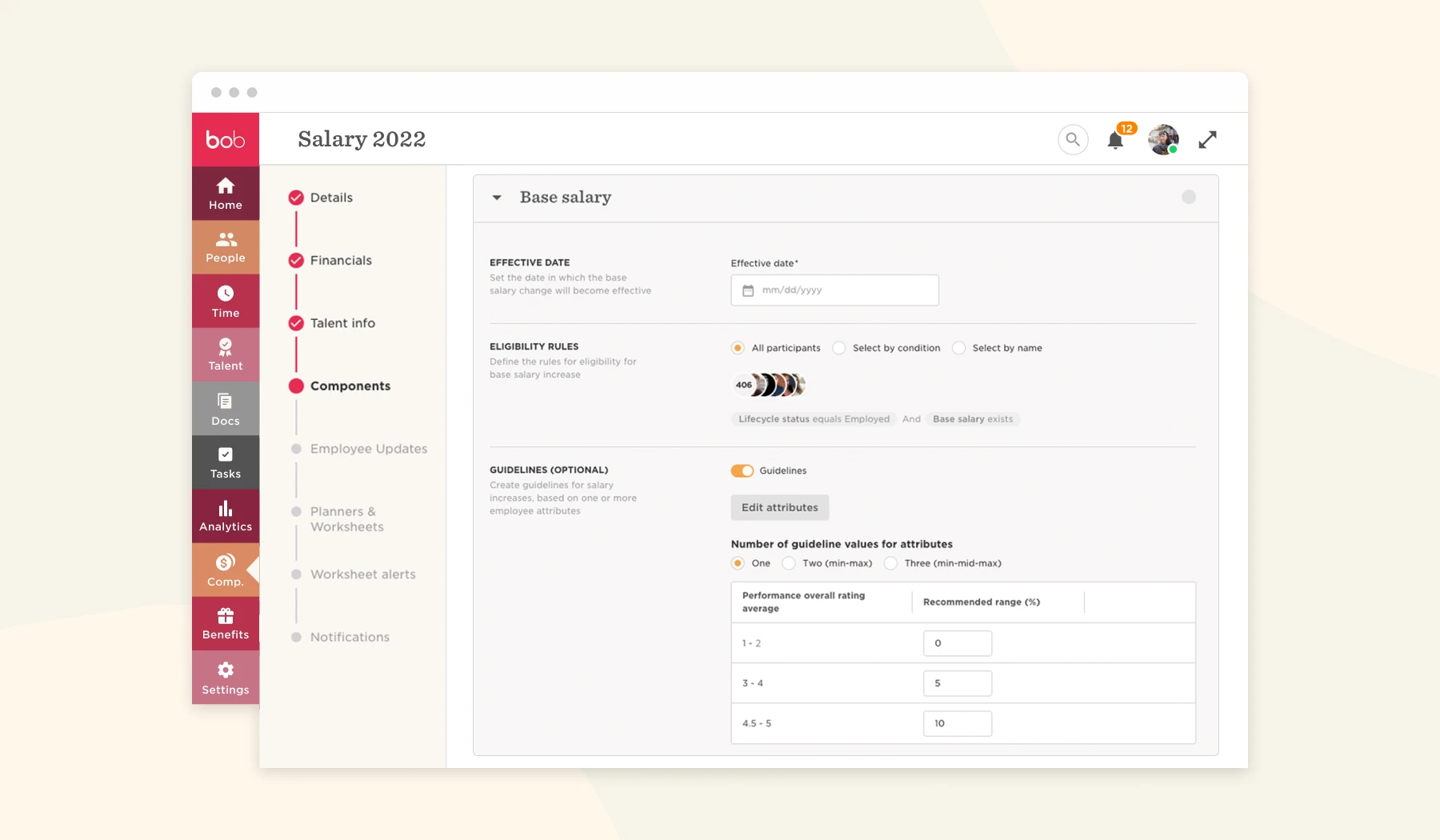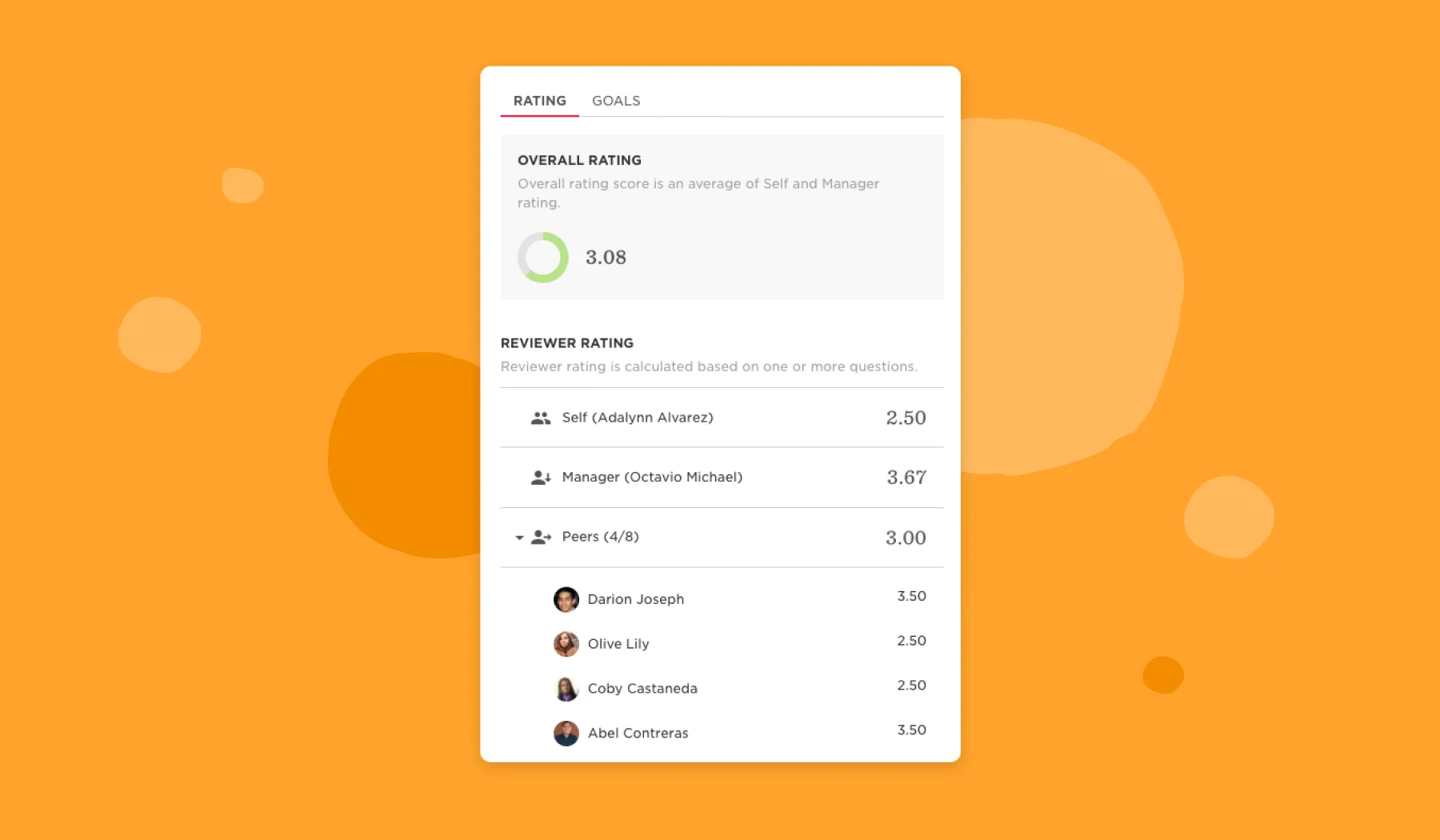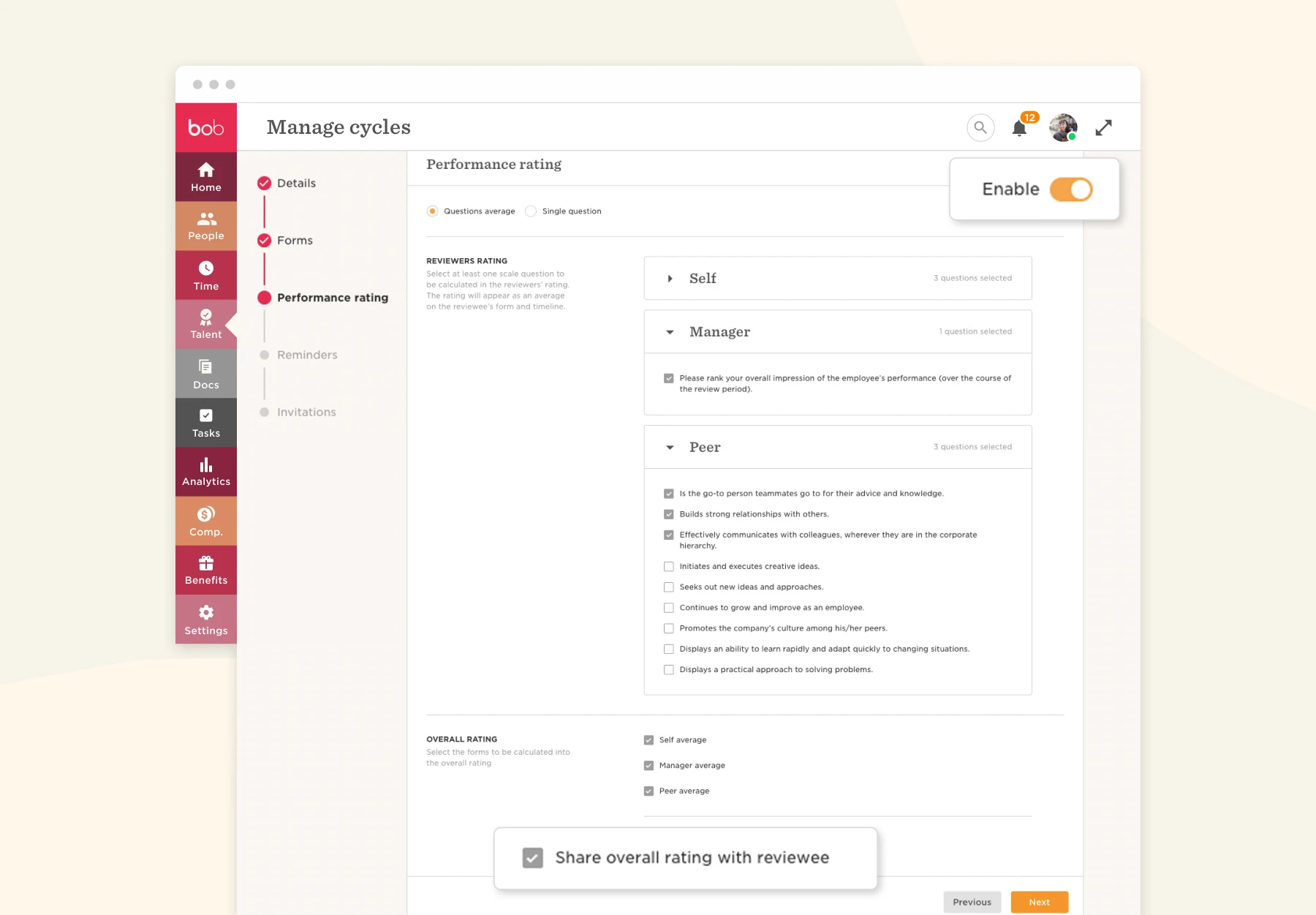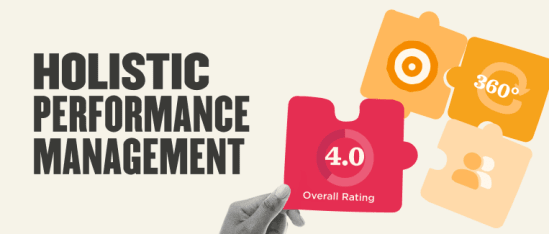In the traditional world of work, companies manage performance by running performance reviews once or twice a year. This often dreaded process typically includes a meeting between the manager and employee, resulting in awarding the employee with an overall performance rating score. Sometimes companies use this score to map employees on a 9-box grid, which determines which employees are underachieving and at risk for termination, and those that are overachieving and destined for promotion.
However, a lot has changed in the modern world of work.
Rather than waiting for the performance review to provide valuable feedback, many companies now use continuous feedback, including regular one-on-one meetings between managers and employees and goal-setting and OKRs for tracking progress and achievements.
Performance reviews have not been eliminated. Many companies have replaced this top-down process with 360-degree feedback, which takes a more holistic approach to the employee, their achievements, and their potential. And while performance ratings may seem old school in the new world of work, they can also be used positively and strategically.
For example, having a quantitative measurement for comparing people enables companies to decide which employees are eligible for a raise or promotion based on hard data, which helps to prevent subjectivity or bias.
There are many tools available for managing performance, and companies should choose those that best fit their culture and business goals. Ultimately, the process should be a positive one for all involved, empowering employees, driving productivity, and encouraging growth.
Introducing overall performance rating in Bob
Recognizing the value that an overall performance rating can bring to performance reviews, we have added it to our Talent module. Using overall performance rating is completely optional—companies can include it or skip it entirely. There is also the option to share the scores with employees or keep them confidential and for internal use only.
Bob’s performance ratings are also completely flexible. Each company can decide which employee attributes and characteristics they want to use to generate the score—their achievements, potential, effort, or all of the above. There is no fixed format or agenda, enabling each company to design its own process.
The employee’s overall performance score is generated by taking the average results from one or more scaled questions chosen from the performance review. Once the performance evaluation is completed, Bob generates the overall performance rating by calculating an average from the scores of the chosen questions.
Adding an overall performance rating to your performance review
When setting up your performance review cycle, you must define whether you want to add the overall performance rating. Select “enable” in the top right corner if the answer is yes.
For the next step, you need to define the scaled questions you want to use that will contribute to the performance score. You can choose a single question or multiple questions, and if you are using 360-degree feedback, you can select questions from the self-review, manager, upward, and peer reviews.

If you choose to share the overall performance rating with the reviewee, once the performance review is completed they will be able to view their performance score together with their review in Bob and on their employee timeline. If you do not enable this, your employees will see their review without a score.

Using the overall performance rating for compensation reviews
Performance ratings provide companies with numerical data on their employees, which can be very helpful when running a compensation review cycle. Companies can set guidelines on salary increases based on the performance scores, which standardize the process across the organization. So, for example, companies can decide that employees that receive a rating of one or two will not receive an increase, a three or a four will get a 5-10 percent increase, and employees who have a performance rate of four and a half or five will receive a 10-15 percent increase.
If you run your compensation review cycles in Bob, you can define these guidelines directly, and all relevant salaries will be automatically updated based on the performance rating scores.

Recommended For Further Reading
Manage performance as you choose
In the modern world of work, many traditional processes have been updated and transformed to create more positive experiences for employees.
Bob’s Talent module includes a wide range of flexible and customizable tools that help companies to build a successful performance management process for their people. Choose one tool, or use them all for a more holistic view of your people. Create a process that reflects your company values, and helps you build a modern and empowering experience where everyone stands to gain.


